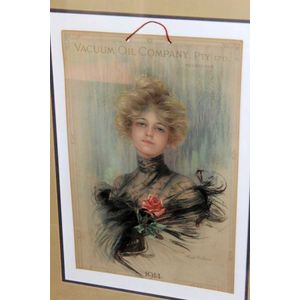French Directoire Style Inlaid Armoire with Mirror and Ormolu
A late 19th century French 'Directoire' style armoire in fruitwoods with inlaid reserves with central mirrored door and ormolu mounts
You must be a subscriber, and be logged in to view price and dealer details.
Subscribe Now to view actual auction price for this item
When you subscribe, you have the option of setting the currency in which to display prices to $Au, $US, $NZ or Stg.
This item has been sold, and the description, image and price are for reference purposes only.
- Inlay - Decorative patterns inserted into the main body of a piece of furniture, generally in wood of contrasting colour and grain, though brass, ivory, ebony, shell and sometimes horn have been used. Inlay may consist of a panel of well figured timber inset into a cabinet door front, geometric patterns, or complex and stylized designs of flowers, swags of foliage, fruits and other motifs. As a general rule, in pieces where the carcase is constructed in the solid, the inlay is relatively simple such as stringing, cross banding and herringbone banding. Where more elaborate and decorative work was required veneer was used. Inlay has been fashionable from at least the latter half of the 17th century, when a variety of elaborate forms were developed
- French Directoire Style - The Directoire style is a furniture design style that was popular in France during the late 18th and early 19th centuries, during the Directoire period (1795-1799) of the French Revolution. It is characterized by simplicity, elegance, and a neoclassical influence. The style is characterized by straight lines, geometric shapes, and minimal ornamentation, often with a whitewashed finish. It is inspired by ancient Greece and Rome. Furniture pieces in the Directoire style include tables, chairs, desks, and sofas, which feature clean, simple lines and a lack of ornamentation, typically in mahogany or other dark woods.
- Ormolu - Ormolu was popular with French craftsmen in the 18th and 19th century for ornamental fittings for furniture, clocks and other decorative items. True ormolu is gilt bronze, that is bronze that has been coated with gold using a mercury amalgam. Due to the health risks associated with using mercury, this method of creating ormolu was discontinued in France in the 1830s. A substitute was developed consisting of about 75% copper and 25% zinc, however it was inferior to the bronze version. It was often lacquered to prevent it tarnishing.
- Mounts - Mounts are used to describe bronze, brass and ormolu adornments on furniture especially quality furniture in the rococo and classical revival style, and are also the cabinet makers' name for the metal fittings on furniture, such as hinges, locks and handles, and metal edges and guards which protect furniture from damage.
This item has been included into following indexes:
Visually similar items

Set three Vacuum Oil Company advertising calendars
Sold by
in
for
You can display prices in $Au, $US, $NZ or Stg.

A faux bamboo framed octagonal wall mirror, 117 x 77 cm
Sold by
in
for
You can display prices in $Au, $US, $NZ or Stg.

Antique French Brittany two door buffet, early 19th century approx 158 cm high. 195 cm wide
Sold by
in
for
You can display prices in $Au, $US, $NZ or Stg.

An old Kangxi period famille verte teapot, decorated with panels of birds and flowering plants. Replacement metal spout and chain, some frits and chips to the enamel. Height 15 cm
Sold by
in
for
You can display prices in $Au, $US, $NZ or Stg.
